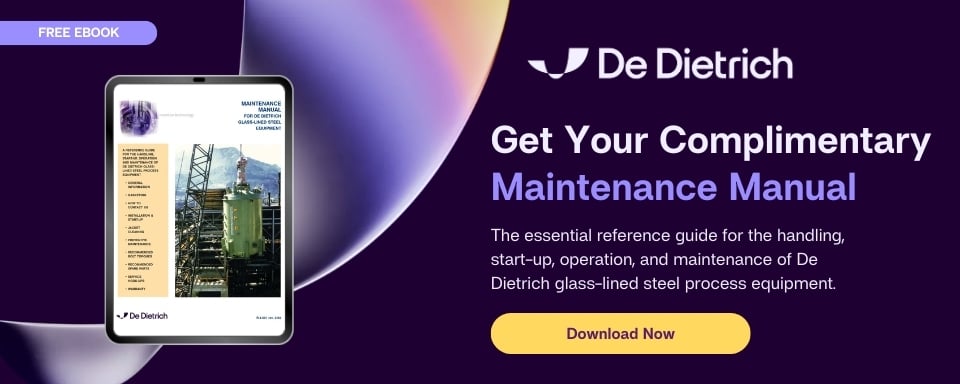9 Tips for Unloading, Rigging and Transferring Glass-Lined Vessels
Jennifer Mayo
|
July 18, 2013
|
1 minute read
 The proper care and handling of glass-lined reactors, tanks and accessories is of vital importance to anyone who operates or maintains such equipment. When contractors or plant personnel install glass-lined equipment, certain precautions should be observed during the unloading, rigging and transferring of the vessel. Whether you own glass-lined equipment already or are looking into procuring some for your process, here are some handling precautions and tips on how to correctly manage this unique equipment.
The proper care and handling of glass-lined reactors, tanks and accessories is of vital importance to anyone who operates or maintains such equipment. When contractors or plant personnel install glass-lined equipment, certain precautions should be observed during the unloading, rigging and transferring of the vessel. Whether you own glass-lined equipment already or are looking into procuring some for your process, here are some handling precautions and tips on how to correctly manage this unique equipment.- Although the use of two cranes is generally recommended, one main crane should always be adequate to handle the entire weight of the vessel. Carefully inspect your crane or other lifting devices before beginning the lift to ensure they are adequate for the load and in good condition.
- Always use slings, hooks and shackles of adequate capacity. Wire rope slings are preferred but polyester or nylon slings may also be used. Carefully inspect all slings prior to use for wear and damage.
- Keep cables, slings and hooks away from the nozzles and manways. Always ensure such openings are properly protected with rubber caps and/or wooden or Homasote boards. Never use nozzles, cover openings, drives, pipe legs or any other bolted attachments for rigging and supporting.
- Never bump the vessel with cables, shackles, hooks, clamps, etc.; it can damage the internal glass lining.
- Always maintain a smooth, steady lift. Try to avoid any jerking motion when lifting or lowering the vessel. Excessive strain on the lifting lugs may cause glass fracturing.
- A glass-lined vessel must never be bumped into walls or other fixed objects. Be sure to provide adequate ground crew to direct crane operation and vessel handling during installation.
- Never support a vessel on the ground or uneven flooring – even temporarily. Use the shipping cradle/skid for support until the vessel can be set into permanent position.
- Internal cribbing/bracing must remain in place until the vessel is in its final position. After installation of the vessel, remove the cribbing and inspect the glass to ensure the lining was not damaged during rigging or removal of the cribbing.
- Glass-lined vessels should be leveled to prevent uneven strains, which could result in damage in the lining. Most agitators must operate in a fully vertical position to avoid drive or seal problems.
We recommend consulting our free eBulletin “Installation and Maintenance Manual for De Dietrich Glass-Lined Steel Equipment” for a complete set of detailed handling instructions. This manual is liberally illustrated with “how to” drawings and is an essential tool for plant and maintenance personnel.
